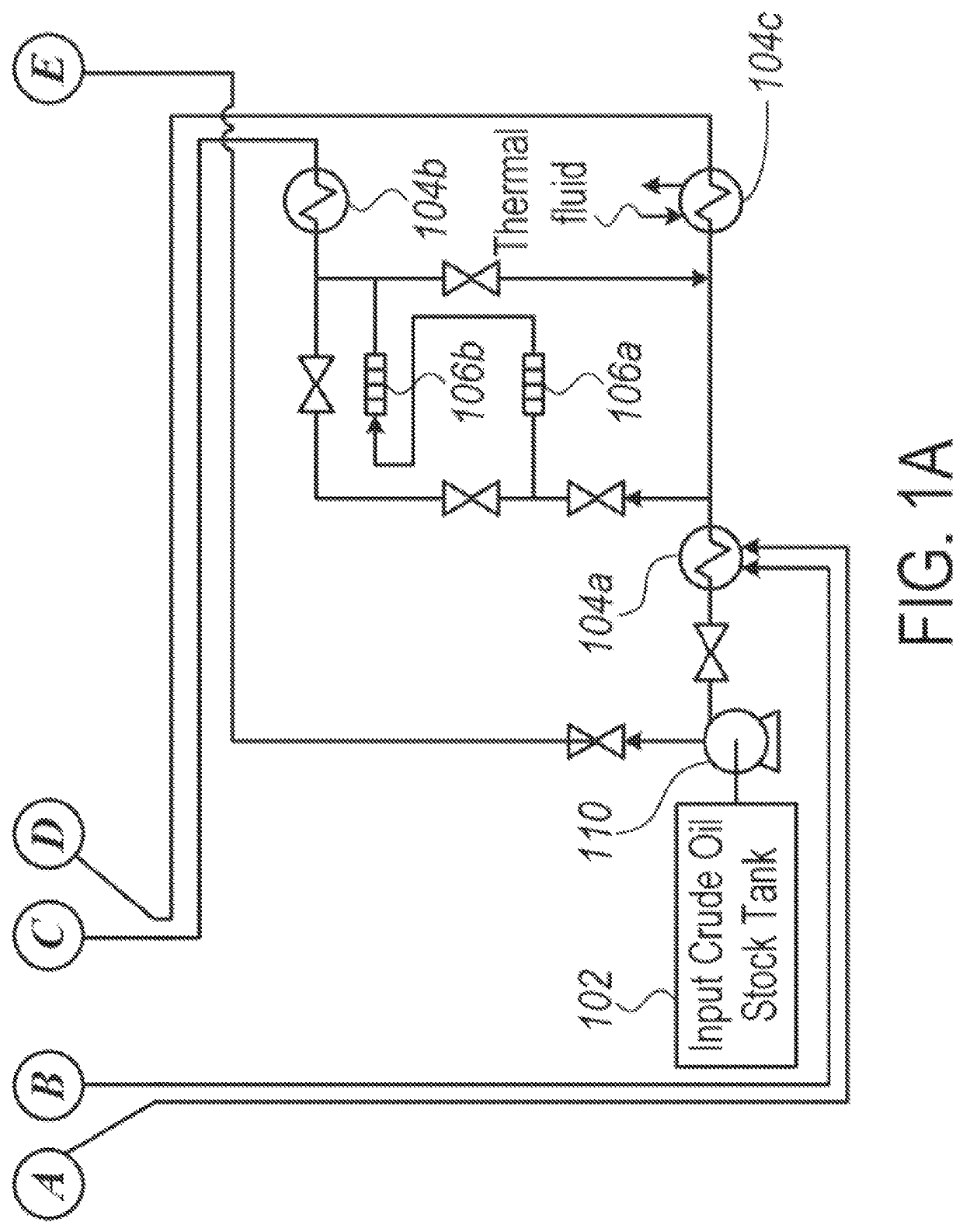System, method and apparatuses for reduced-emission micro oil refinery
a technology of micro-oil refinery and micro-oil refining, which is applied in the direction of hydrocarbon oil refining, hydrocarbon oil treatment, multiple-effect/fractional condensation, etc., can solve the problems of government tolerating sun-blocking smog, disrupting the process, and affecting the health of the population, so as to reduce the emission of combustion
- Summary
- Abstract
- Description
- Claims
- Application Information
AI Technical Summary
Benefits of technology
Problems solved by technology
Method used
Image
Examples
working examples
[0064]Example 1: The table as shown below is an example, that illustrates the breakdown of the higher-purity, cleaner-burning designer fuels (in %) which may be produced from the process, when light crude oil having >27 API gravity is used as the input crude oil feedstock. The ratio amounts of different fuels produced in the process is completely based upon the characteristics of the input crude oil, including viscosity, gravity, sulfur content, asphaltene content, paraffin content. Based on these parameters, the automation process calculates the most optimal mix of output fuel depending on the real-time price and demands of the fuels. If the input crude oil has an API of 60% of its volume as Asphalt and 25 gravity, which is light crude oil, then that will produce a wide range of fuels as shown in table below. This table may be used for determining profits and the amounts of ester additives to be added into the finished fuels.
[0065]
TABLE 1Annual fuel production ratios from the proce...
PUM
| Property | Measurement | Unit |
|---|---|---|
| densities | aaaaa | aaaaa |
| temperature | aaaaa | aaaaa |
| pressure | aaaaa | aaaaa |
Abstract
Description
Claims
Application Information
 Login to View More
Login to View More - R&D
- Intellectual Property
- Life Sciences
- Materials
- Tech Scout
- Unparalleled Data Quality
- Higher Quality Content
- 60% Fewer Hallucinations
Browse by: Latest US Patents, China's latest patents, Technical Efficacy Thesaurus, Application Domain, Technology Topic, Popular Technical Reports.
© 2025 PatSnap. All rights reserved.Legal|Privacy policy|Modern Slavery Act Transparency Statement|Sitemap|About US| Contact US: help@patsnap.com



